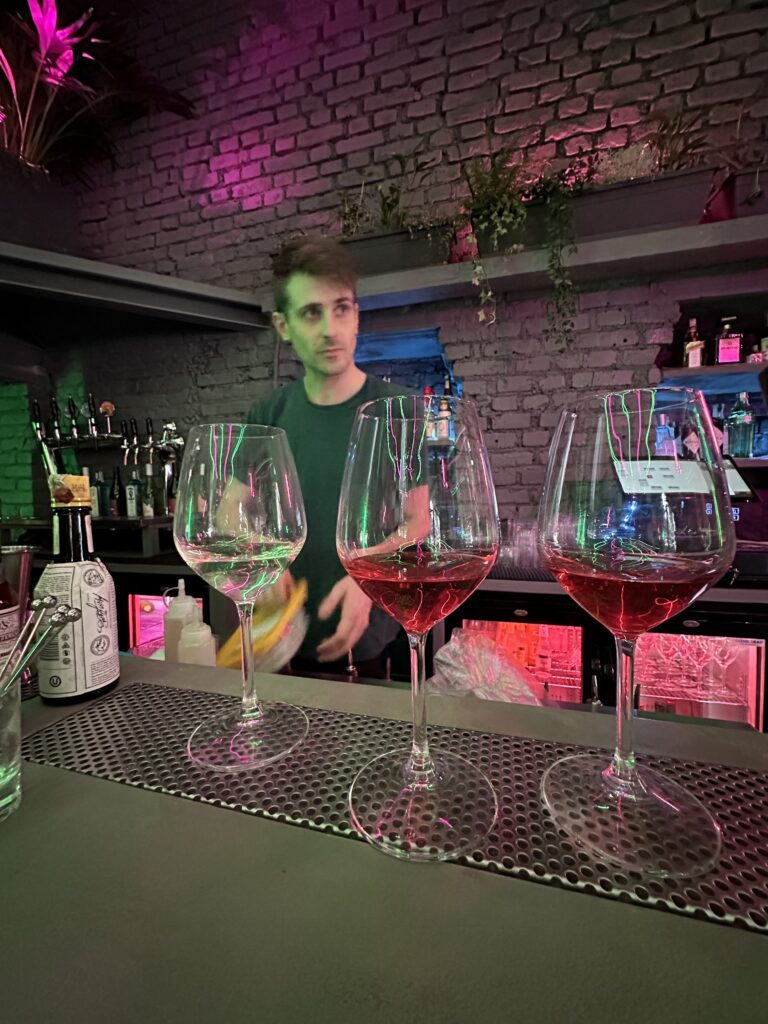Afterlove lo scopriamo alla vigilia del Milano Pride .

Si tratta di una casualità. Il locale sfodera al suo ingresso un arcobaleno ma quello che interessa è che sfodera un senso di libertà .

Afterlove è per tutti, i nostalgici del passato, i trend setter, gli amanti della mixology, i fashion victim, i golosi. Quasi anacronistico, con playlist talvolta slegate completamente dall’ambientazione eppure così azzeccate in quel momento.
un cocktail bar non solo cocktail bar nel cuore del quartiere Isola a fianco ad aroma napoletano https://www.aromanapoletanomilano.com, quello delle brioche giganti in via Traù una via dalla vivace personalità quindi. Afterlove ci ricorda i primi discopub ma non è un club anche se la palla stroboscopica e l’atmosfera traggono in inganno

Afterlove con i suoi neon, verdi e fucsia l’ambientazione che rievoca gli anni 90 di Ocean Drive a Miami, ispirato in parte a Miami Vice e al cult movie Piume di Struzzo

Ma a noi ricorda gli anni 90 gli anni 2000 e il presente di Milano. Afterlove fronteggia i trend milanesi con una naturalezza e semplicità che spiazza e ha pure un dehors. Piante dentro e fuori si mescolano al design

“È un locale in cui riappropriarsi del piacere di trascorrere il proprio tempo libero senza inutili complicazioni, dove amare e condividere con semplicità una serata in compagnia” racconta il titolare Tommaso Regondi, ex retail manager di Brand lusso.
La sua flemma accompagna la fluidità di Afterlove, concepito con Milo Occhipinti (fondatore del cocktail bar Unseen).
Niente da dire, i cocktail da Afterlove sono molto buoni e le birre arrivano da Seregno da Railroad Brewing Company https://www.quantoseipunk.it perchè Afterlove è anche un po’ punk nell’anima.

Drink list Afterlove
draft e signature.
È possibile scegliere tra 4 draft, che sono quei drinks che ormai trovi sempre e ovunque e ci devono essere, perchè Afterlove è comforting , (e sì lo Spritz c’è)
Gin tonic (aromatizzato allo yuzu e bergamotto),
Moscow mule (con note di pepe nero),

Americano (a prevalere è il sentore di frutti rossi, pur rimanendo estremamente secco)
Paloma (retrogusto e profumo intenso di ibisco).
I signature Afterlove
Sono come Afterlove, piacevoli, freschi, ipnotici tra i quali spiccano:
Love Gardens (un long drink fresco e dissetante con note floreali)

Smoke Bomb (Secco e floreale),
Vice City (sapido e fruttato)

BananaLove (vellutato e tropicale).

Proposta Food Afterlove
Dalla sexy cucina arrivano piatti espressi e realizzati con un pensiero innovativo.
Afterlove è un locale che invoglia la condivisione così i piatti che compongono il menu sono un viaggio intorno al mondo che trasporta spezie, profumi ed intriganti mix di sapori lontani. Da provare i Samosa just wow..

ma anche le olive cotte al forno che arrivano dal Centro Italia hanno il loro perchè.
In carta da Afterlove trovate sia i bites , veri e propri bocconi di piacere che i mains , più elaborati e abbondanti. Tra questi ultimi, troviamo due varianti di tacos, le alette di pollo (obbligatorio leccarsi le dita) e il mouttabal
Afterlove è sia qualcoa di visto che una novità, bisogna andarci più volte per capire la sua poliedricità anche nel calendario eventi. Vi diciamo già che a breve ci saranno (dato il successo dell’edizione zero) anche serate a tema Korea.
Stay tuned
Afterlove
Via Traù, 2 Milano
Aperto dal martedì al sabato, dalle 18:00 all’01:00





